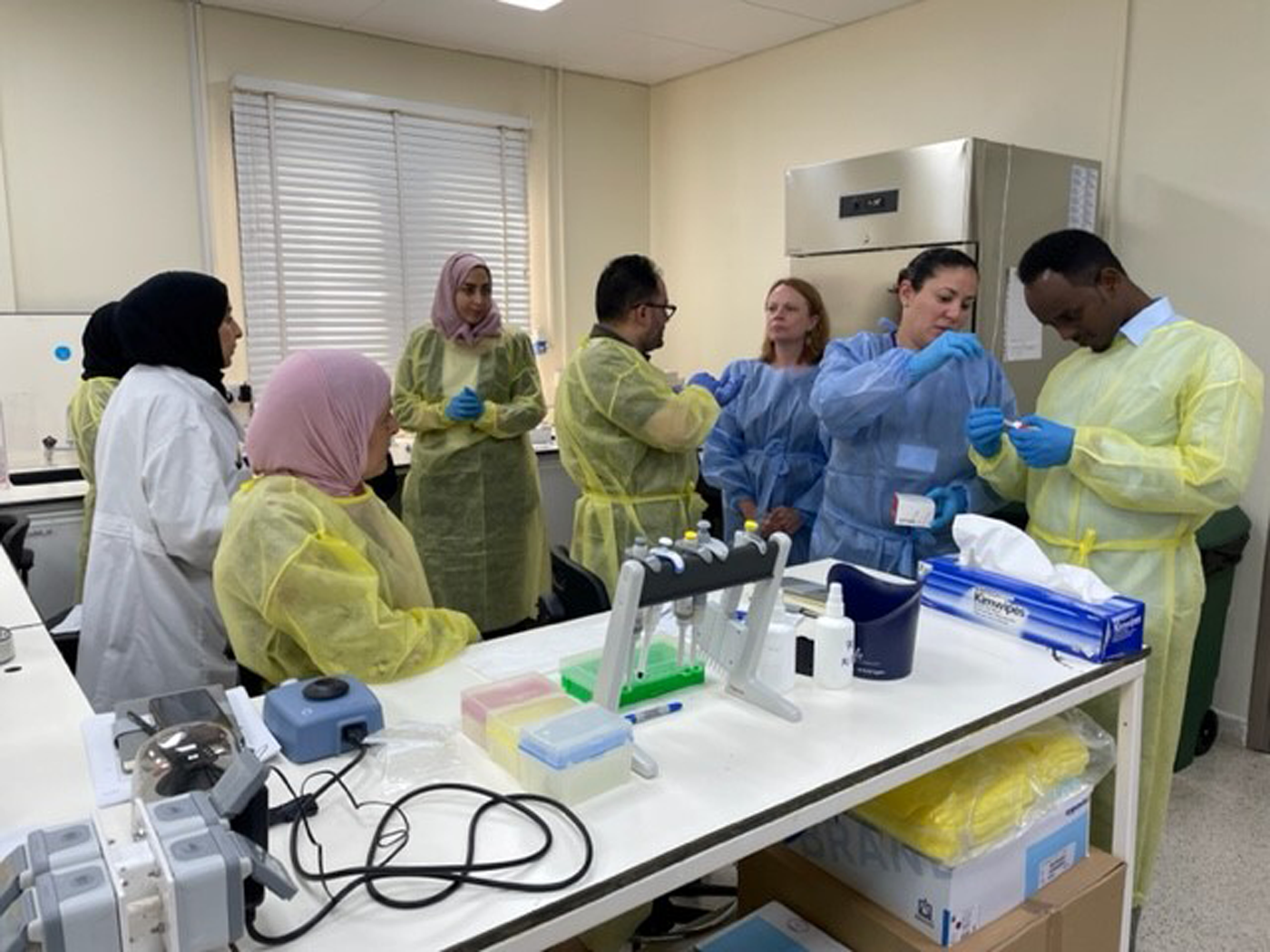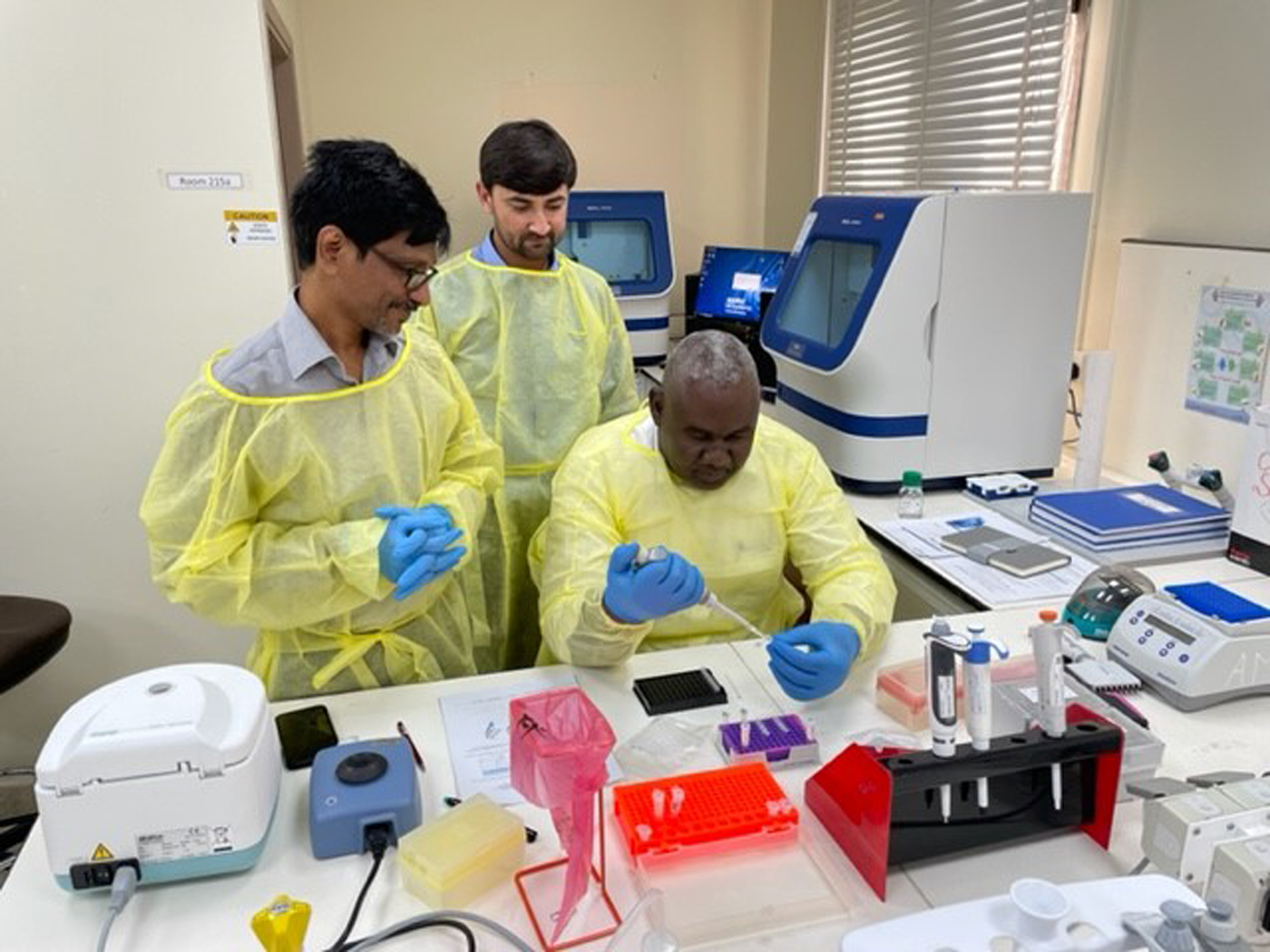 The training aimed to build capacity of national influenza centres across the Region Cairo, 4 December 2022 – The World Health Organization (WHO)’s Regional Office for the Eastern Mediterranean and the US Centers for Disease Control and Prevention (CDC) recently conducted back-to-back training in Muscat, Oman. The training was organized in partnership with Oman’s national influenza centre to build capacity across the Region to support end-to-end integration of severe acute respiratory virus coronavirus 2 (SARS-CoV-2), influenza sentinel surveillance and develop sequencing skills of national influenza centres.
The training aimed to build capacity of national influenza centres across the Region Cairo, 4 December 2022 – The World Health Organization (WHO)’s Regional Office for the Eastern Mediterranean and the US Centers for Disease Control and Prevention (CDC) recently conducted back-to-back training in Muscat, Oman. The training was organized in partnership with Oman’s national influenza centre to build capacity across the Region to support end-to-end integration of severe acute respiratory virus coronavirus 2 (SARS-CoV-2), influenza sentinel surveillance and develop sequencing skills of national influenza centres.
The first training session on 6–10 November aimed to help establish Oman’s national influenza centre as an international sequencing centre for influenza and SARS-CoV-2. The centre would then be able to support regional capacity-building for end-to-end integrated surveillance and expansion of influenza and SARS-CoV-2 sequencing not only in Oman but other countries, in line with the goals of WHO’s Global Influenza Programme.
The second training session on 13–17 November was attended by 20 laboratory managers and technicians from 19 countries in the Region. It was introductory level training on next-generation sequencing, such as Oxford Nanopore Technologies, which is easy to use with an informatics component to assemble raw data and generate high quality influenza and SARS-CoV-2 consensus sequences.
Training is vital for national influenza centre staff across the Region, as centres are national institutions designated by ministries of health and recognized by WHO to participate in the Global Influenza Surveillance and Response System (GISRS).
The main role of these centres is to conduct seasonal influenza surveillance, which forms the basis of WHO’s recommendations on annual vaccine composition.
 Participants applying skills they have learnt during the training
Participants applying skills they have learnt during the training
National influenza centres also alert WHO to unusual outbreaks of influenza or influenza-like illness and are able to detect non-subtypable or low-reacting virus isolates using WHO diagnostic reagents provided through the GISRS. They are on the frontline in response to outbreaks of emerging influenza viruses and other respiratory pathogens causing severe diseases such as avian influenza A(H5N1), A(H7N9) viruses and Middle East respiratory syndrome coronavirus (MERS-CoV).
The training was conducted as currently GISRS expedites end-to-end integration of influenza and SARS-CoV-2 surveillance, initiated in March 2021, in 27 countries across WHO’s 6 regions.
Countries are supported operationally and technically on end-to-end integration of screening, testing and reporting surveillance results using real-time reverse-transcription po lymerase chain reaction (RT-PCR) multiplex assays for influenza and SARS-CoV-2 and on sharing virus materials sequencing and sharing of genetic sequence data to publicly accessible data platforms.
Related links
Oman launches WHO collaborating centre for emerging and re-emerging infectious diseases


